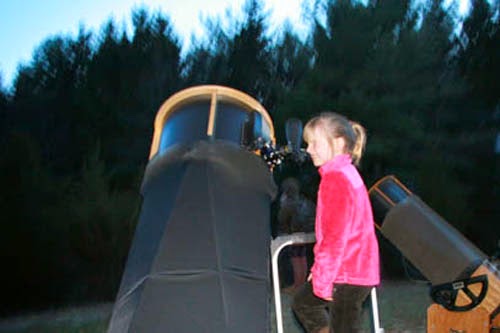As you noted from the images Mike Radwick (thank you Mike) sent to us, "official" first light for our club's new telescope has occurred! (See yesterday's post for more about the telescope, see below for the images). It was pretty much a complete success. We need to add a little weight to the mirror end and digital setting circles remain to be installed. Setup and collimation went fine and the mirror seemed to cool down quickly. The images were very good. Excellent detail and resolution of Jupiter and Mars. Porrima was a very clean split. Not that big a deal at about 2.2 arc seconds, but we used low power. M35 showed pinpoint stars to the edge of the field of a 26mm Nagler. The supernovae in M82 was easier to detect than it was in the McMath. Everyone that touched this scope, from the re-figuring of the mirror to the finished product should be thanked thoroughly for their excellent work! This is going to be a great club resource.And the photos from Saturday night...
Our new scope has already done great service as we had a turnout of at least a dozen Lowbrows and a public turnout of 60 to 75. It may have started a little later than we hoped, but the season has started in grand style. We should be proud.
The telescope with one pair of truss tubes.
Some of the components...
Setting it up...
Carly takes a look...








